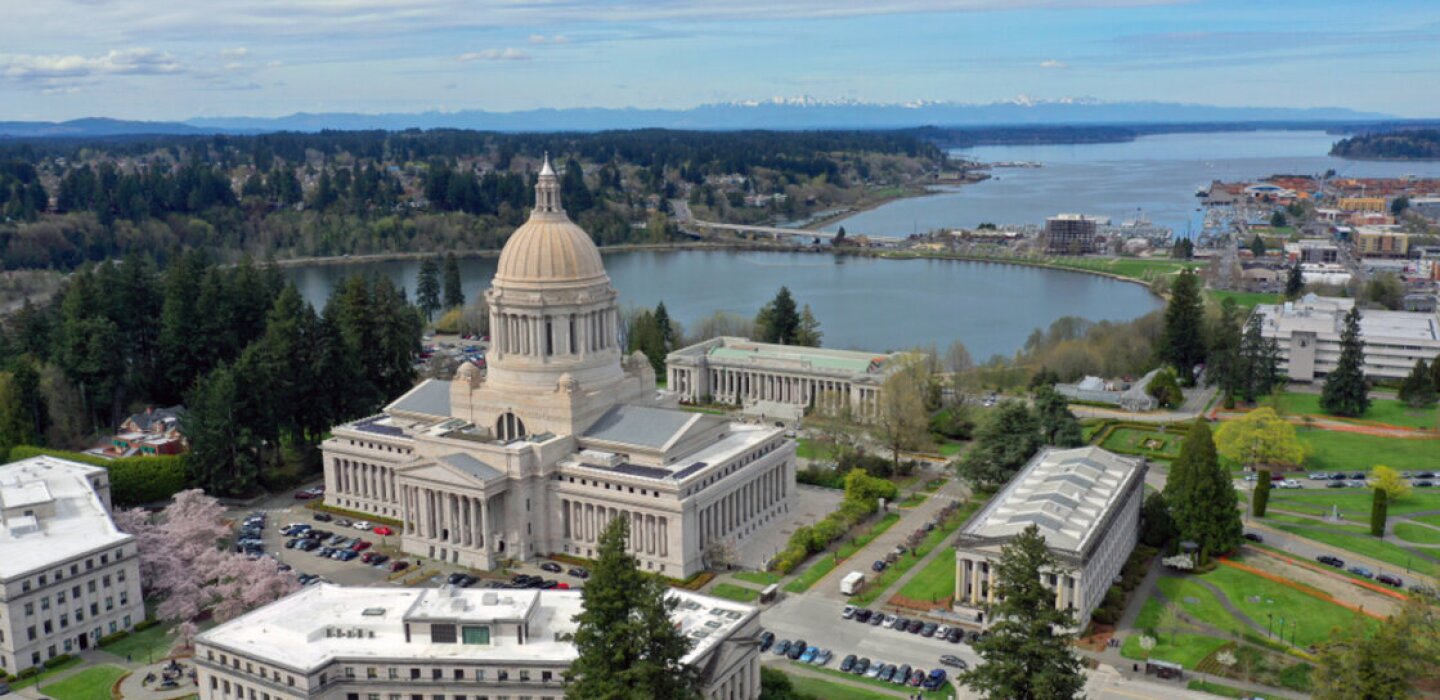
Wash. Counties Join Forces to Combat Sea Level Rise
(TNS) – Protecting downtown Olympia from flood waters caused by sea level rise will be no cheap feat. But officials have had to plan for it for decades: Much of downtown’s footprint was built on man-made landfill in Budd Inlet.
The city’s Sea Level Rise Response Collaborative executive committee has been giving briefings over the last month on how the city will combat rising waters. According to city data, sea levels are expected to rise 32 to 68 inches by the year 2100.
The range may be wide, but if water levels were to rise as expected, more than 360 acres of downtown Olympia could see frequently dangerous flooding levels. The state Department of Enterprise Services’ announcement earlier this fall that it will work to restore the manmade Capitol Lake to a natural estuary as a less costly option that helps the environment will also mean more frequent flooding. And with intense storms becoming more frequent, the time for collaboration is now.
The Sea Level Rise Response Collaborative executive committee meets about four times a year and is made up of representatives from Olympia , LOTT Clean Water Alliance, and the Port of Olympia. Olympia city council member Dani Madrone chairs the committee. At its Nov. 4 meeting, it welcomed the state Department of Enterprise Services and Thurston County as ex-officio members to help address Olympia’s future flooding problems.
The committee’s work plan covers physical strategies for addressing sea level rise, including building sea walls and elevating the land around Puget Sound’s edge. It also includes operational strategies like emergency response and maintenance of stormwater infrastructure, as well as governing strategies and how the work will be funded long term.
Eric Christensen, city water resources director, said much has been done even since the committee met in the summer. Stormwater utility crews finished installing two new tide gates around Capitol Lake in an effort to mitigate flooding similar that seen last January. Crews also recently replaced the main tide gate that handles stormwater from the farmers’ market south to Olympia Supply & Ace Hardware on Columbia Street.
More than 20 tide gates have been installed in the last three years, and more will be needed as water levels change. Once Capitol Lake returns to an estuary, tidal flow will need to be managed, especially during heavy rainfall. Christensen said an estuary will lead to more frequent flooding, since water levels will change with the tide.
He said a gauge is being installed at the Port’s marine terminal to keep track of levels similar to the county’s river gauges. U.S. Harbors has plans to install a gauge at Swantown Marina, too, but he’s not sure when that will happen.
Just before the rainy season began, Christensen said crews worked with LOTT to install magnetic covers over stormwater drainage basins to keep tide waters from entering and disrupting wastewater treatment.
There’s more to come in the new year, and the committee has a budget of $210,000 to split among projects. Funding comes from Olympia, LOTT and the port, with the city carrying half of the weight.
Christensen said the committee plans to conduct a satellite land subsidence survey, which will measure how much the land near the inlet is sinking. Subsidence alone may contribute to 8 inches of sea level rise by the year 2100, he said.
Funding also will go to a groundwater study of tidal influences, as well as a finance committee that will investigate more long-term money sources and outside funding opportunities. Christensen said the city isn’t currently eligible for federal emergency relief funding for this next year, but it will apply for aid during the next funding cycle.
Altogether, saving the city from going underwater will cost an estimated $1.25 million in the next five years. That jumps to between $16 million and $26 million in 5 to 30 years from now, and between $190 million and $350 million beyond that, according to 2018 data. Those estimates are higher now, due to inflation and other rising costs.
With the city of Olympia talking about reimagining Percival Landing , Christensen said one of the leading ideas for the downtown area is to raise the elevation. That, along with sea walls, stormwater maintenance and continued emergency preparedness, should make a significant difference.
___
©2022 The Olympian (Olympia, Wash.)
Distributed by Tribune Content Agency, LLC.


Average Rating